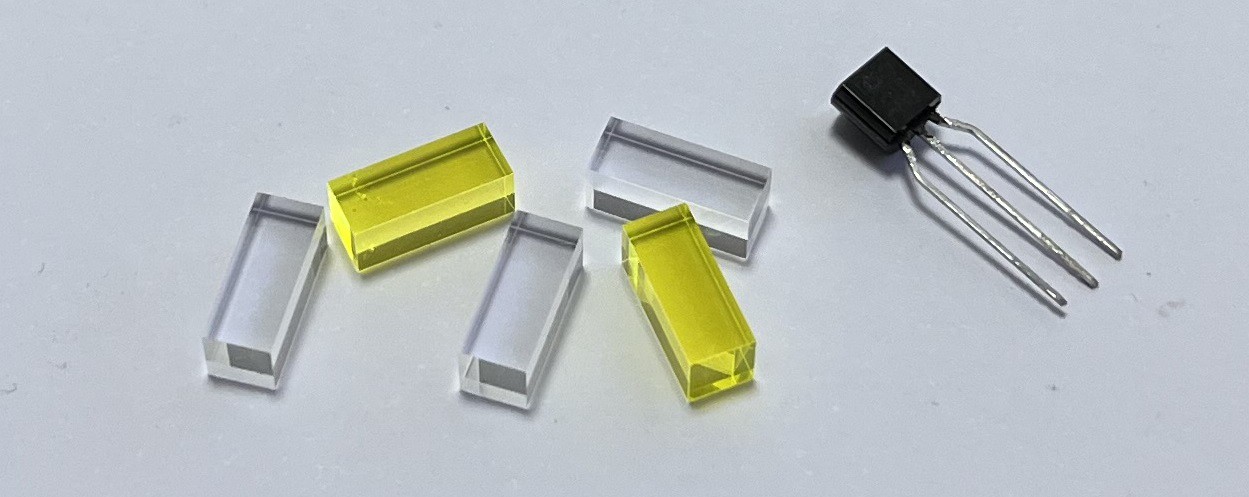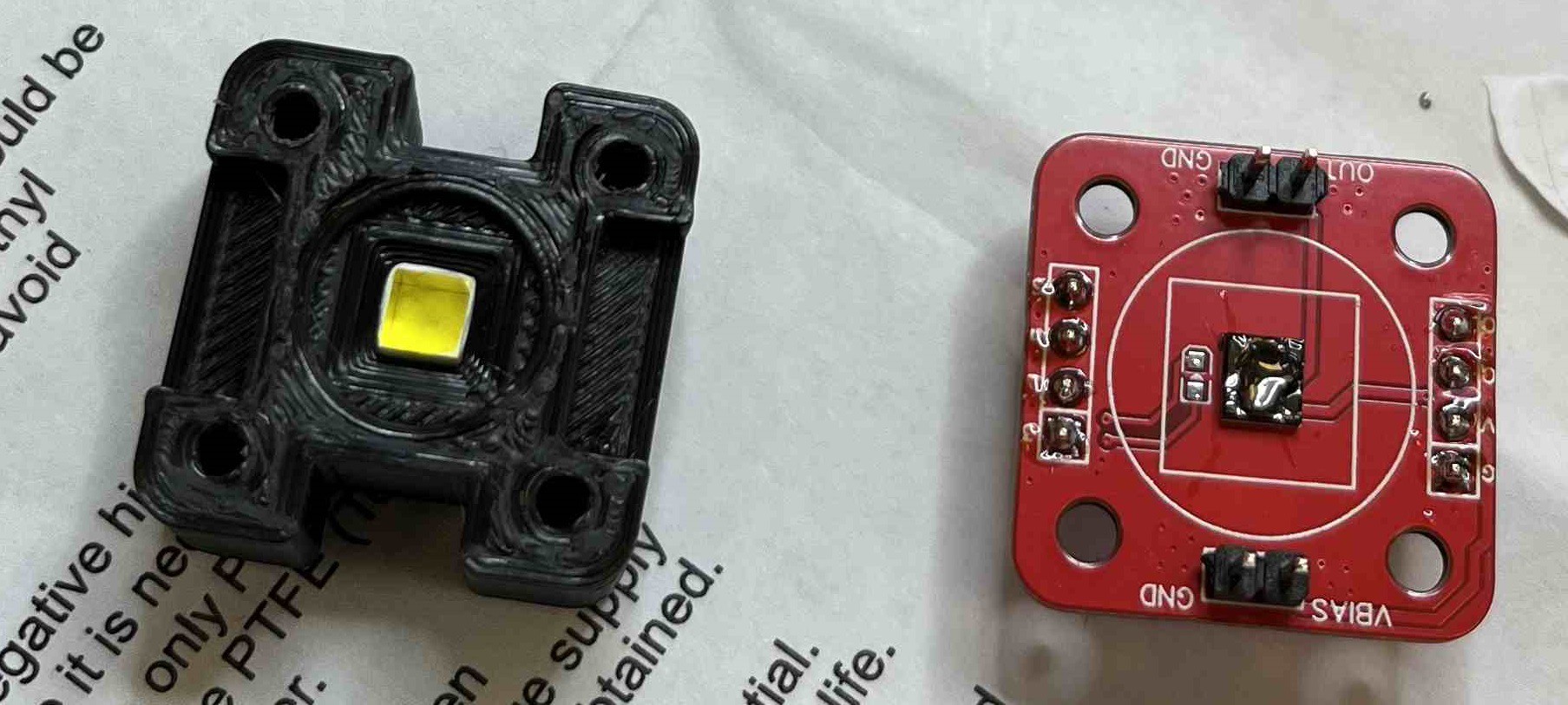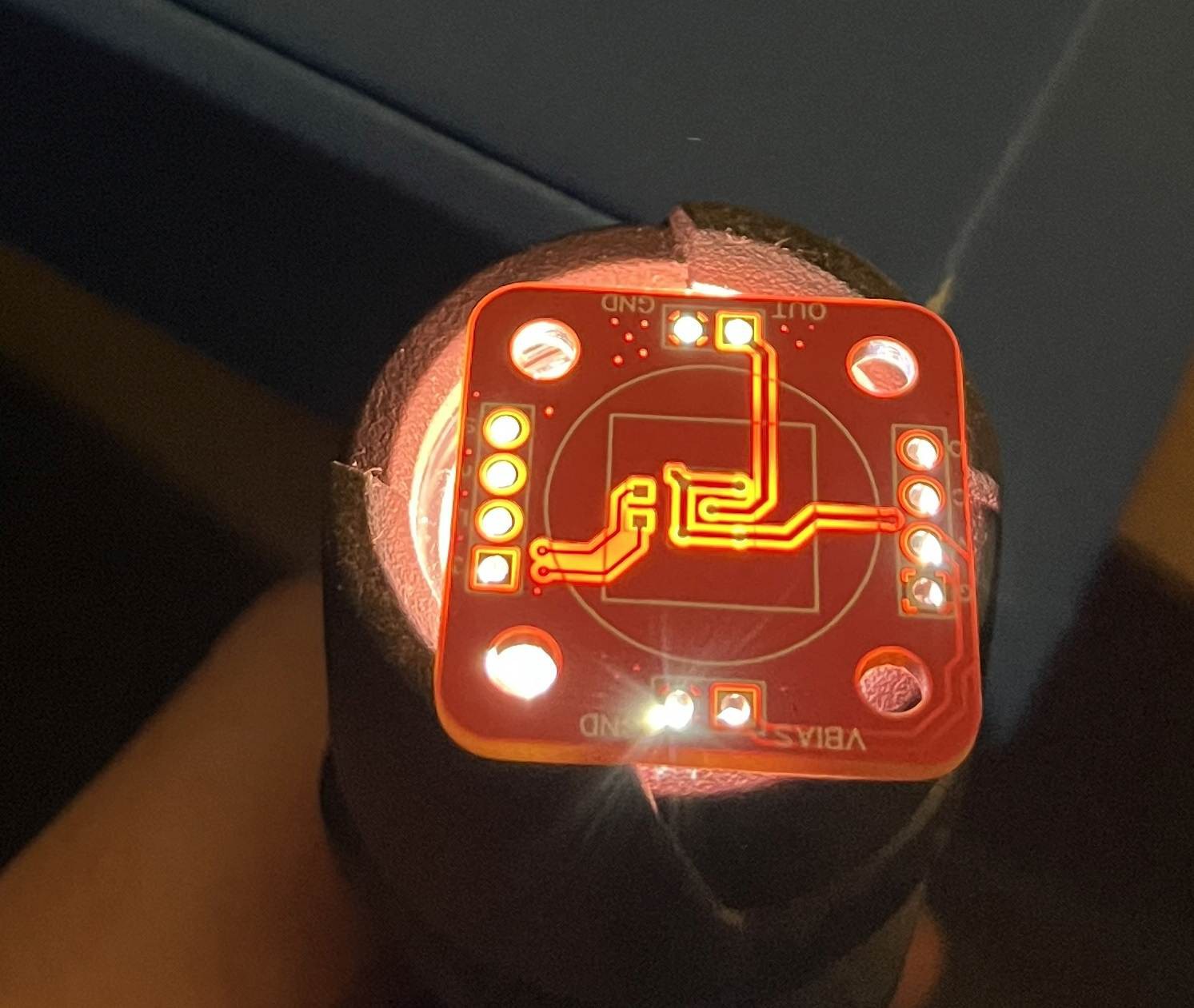
Physics overview
When a high energy photon (a gamma ray) is absorbed by a scintillator some visible photons are emitted. These visible photons have a fairly fixed wavelength, but the number of photons is proportional to the energy of the gamma ray. This number is in the range of tens of photons per keV, so for a 662 keV gamma ray coming from Cs137 hitting a CsI(Tl) scintillator you get ~36000 optical photons. For a 59 keV gamma ray from Am241 you only get about 3000. This is a statistical process so the numbers vary, giving rise to limited detector resolution – the full energy peak of a monoenergetic gamma ray will appear as a broad distribution in the detector. The optical photons are emitted in all directions from the point of interaction in the crystal, and there may be multiple such points (e.g. if the gamma ray suffers Compton scattering within the scintillator and the resulting lower energy gamma ray is also absorbed).
Important properties of scintillators are light yield (optical photons per keV), density, and atomic composition. High density materials containing elements with a high atomic number are preferred as they have a higher probability that the gamma ray will interact with the scintillator and not let any of the deposited energy escape the scintillator.
Detector assembly
Since the scintillator emits a pretty small number of photons and they can originate anywhere in its volume, it is important to try to reflect as many of these as possible towards the detector. This can be done either with specular (mirror-like) as well as diffuse (matte) reflection. It’s very common to wrap the scintillator in plumber’s tape (Teflon).
Also because of the small number of optical photons you’ll want to keep any stray light from entering the detector as this will completely overwhelm the scintillation photons. You’ll sometimes see people in labs placing several layers of dark heavy clothes over detectors when these are not light-tight by design.
Pomelo


I used a 4mm x 4mm x 10mm GAGG(Ce) crystal wrapped in Teflon tape and placed in a black 3D printed holder. I was hoping the PCB would provide enough light-tightness on the bottom but some light ended up coming through the PCB material around traces that did not have copper pour behind them. The picture on the right shows an extreme case with a flashlight shining through the PCB. Enough photons to disturb the measurement came through even in ambient lighting conditions.
 mihai.cuciuc
mihai.cuciuc
Discussions
Become a Hackaday.io Member
Create an account to leave a comment. Already have an account? Log In.